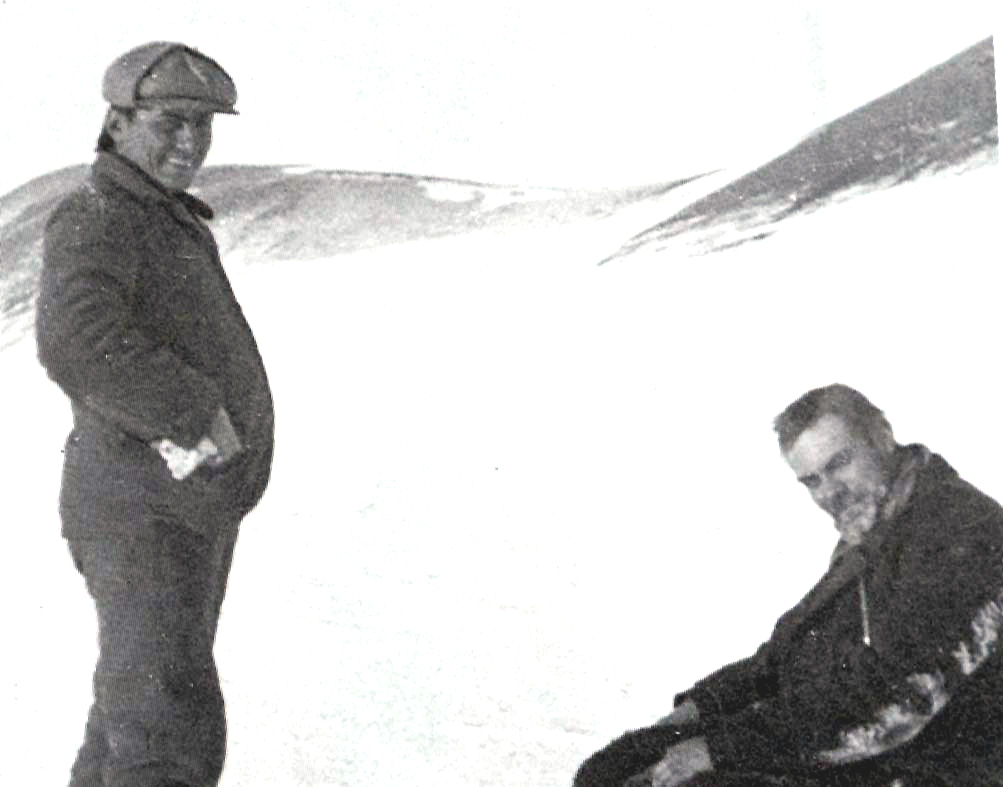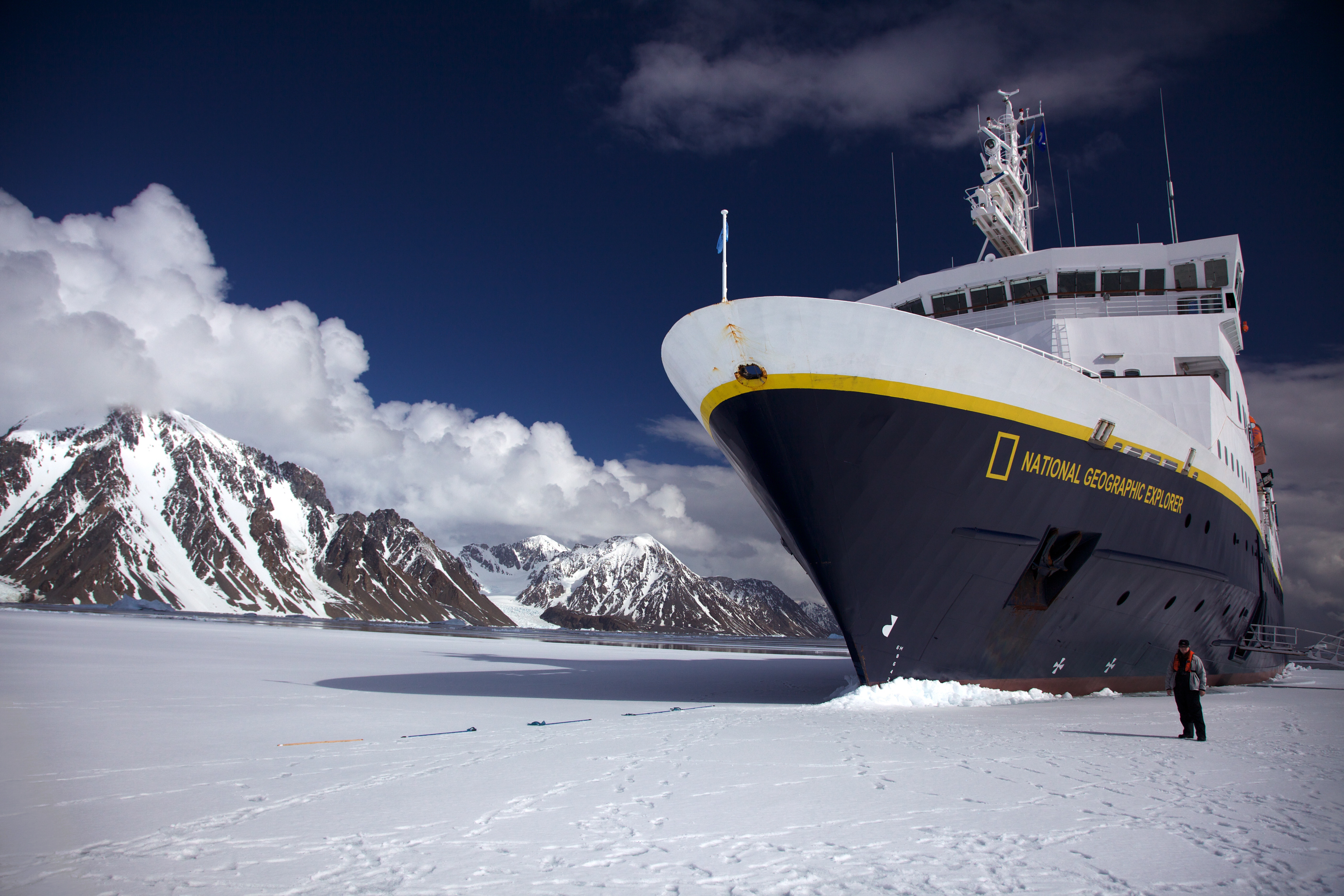|
Marambio Airport
Marambio Airport is an airport serving Marambio Base, an Argentina, Argentinian research station on Seymour Island in the Antarctic Peninsula. Marambio is the main air-support node for most local and foreign stations in Argentine Antarctica, providing year-round medical evacuation, search and rescue, personnel, cargo, and mail transfer. Supplies are taken to the Marambio Base during the whole year for later distribution to other Argentine bases (except for Belgrano II). There are over 100 intercontinental flights every year. Facilities The airport control tower is high. The runway is lined with strobe lights. The parking apron provides large cargo aircraft like the Hercules C-130 with access to fuel and concurrent services. There is a hangar for the Argentine Air Force de Havilland Canada DHC-6 Twin Otter that routinely operates from the base along with two Bell 212s that are deployed during the summer campaigns to support scientific activities and link to other Argentine bas ... [...More Info...] [...Related Items...] OR: [Wikipedia] [Google] [Baidu] |
Marambio Base
("Antarctica's Entrance Door") , motto = , anthem = , pushpin_map = Antarctica , pushpin_map_alt = Location within Antarctica , pushpin_map_caption = Location within Antarctica , pushpin_mapsize = 300 , pushpin_relief = yes , coordinates = , subdivision_type = Country , subdivision_name = , subdivision_type1 = Province , subdivision_name1 = Tierra del Fuego, Antarctica, and South Atlantic Islands Province , subdivision_type2 = Department , subdivision_name2 = Antártida Argentina , subdivision_type3 = Region , subdivision_name3 = Graham LandAntarctic PeninsulaAntarctica , subdivision_type4 = Location , subdivision_name4 = Marambio Island , established_title = Settled , established_date = , established_title1 = Established , established_date1 = , established_title2 = Founded ... [...More Info...] [...Related Items...] OR: [Wikipedia] [Google] [Baidu] |
Seymour Island
Seymour Island or Marambio Island, is an island in the chain of 16 major islands around the tip of the Graham Land on the Antarctic Peninsula. Graham Land is the closest part of Antarctica to South America. It lies within the section of the island chain that resides off the west side of the peninsula's northernmost tip. Within that section, it is separated from Snow Hill Island by Picnic Passage, and sits just east of the larger key, James Ross Island, and its smaller, neighboring island, Vega Island. Seymour Island is sometimes called Marambio Island or Seymour-Marambio Island, taking its resident Argentine base as its namesake (see section, Base Antárctica Marambio, below). Historic site A wooden plaque and rock cairn stand at Penguins Bay, on the southern coast of Seymour Island. The plaque was placed on 10 November 1903 by the crew of the Argentinian Corvette ''Uruguay'' on a mission to rescue the members of the Swedish expedition led by Otto Nordenskiöld. The inscript ... [...More Info...] [...Related Items...] OR: [Wikipedia] [Google] [Baidu] |
Argentina
Argentina (), officially the Argentine Republic ( es, link=no, República Argentina), is a country in the southern half of South America. Argentina covers an area of , making it the second-largest country in South America after Brazil, the fourth-largest country in the Americas, and the eighth-largest country in the world. It shares the bulk of the Southern Cone with Chile to the west, and is also bordered by Bolivia and Paraguay to the north, Brazil to the northeast, Uruguay and the South Atlantic Ocean to the east, and the Drake Passage to the south. Argentina is a federal state subdivided into twenty-three provinces, and one autonomous city, which is the federal capital and largest city of the nation, Buenos Aires. The provinces and the capital have their own constitutions, but exist under a federal system. Argentina claims sovereignty over the Falkland Islands, South Georgia and the South Sandwich Islands, and a part of Antarctica. The earliest recorded human prese ... [...More Info...] [...Related Items...] OR: [Wikipedia] [Google] [Baidu] |
Antarctic Peninsula
The Antarctic Peninsula, known as O'Higgins Land in Chile and Tierra de San Martín in Argentina, and originally as Graham Land in the United Kingdom and the Palmer Peninsula in the United States, is the northernmost part of mainland Antarctica. The Antarctic Peninsula is part of the larger peninsula of West Antarctica, protruding from a line between Cape Adams (Weddell Sea) and a point on the mainland south of the Eklund Islands. Beneath the ice sheet that covers it, the Antarctic Peninsula consists of a string of bedrock islands; these are separated by deep channels whose bottoms lie at depths considerably below current sea level. They are joined by a grounded ice sheet. Tierra del Fuego, the southernmost tip of South America, is about away across the Drake Passage. The Antarctic Peninsula is in area and 80% ice-covered. The marine ecosystem around the western continental shelf of the Antarctic Peninsula (WAP) has been subjected to rapid climate change. Over the past 50 ... [...More Info...] [...Related Items...] OR: [Wikipedia] [Google] [Baidu] |
Argentine Antarctica
Argentine Antarctica ( es, Antártida Argentina or Sector Antártico Argentino) is an area of Antarctica claimed by Argentina as part of its national territory. It consists of the Antarctic Peninsula and a triangular section extending to the South Pole, delimited by the 25th meridian west, 25° West and 74th meridian west, 74° West meridians and the 60th parallel south, 60° South parallel. This region overlaps the British Antarctic Territory, British and Chilean Antarctic Territory, Chilean claims in Antarctica. Argentina's Antarctic claim is based on its continued presence in the region since 1904, and the area's proximity to the South American continent. Argentina's claim to this area is subject to the Antarctic Treaty. Administratively, Argentine Antarctica is a Departments of Argentina, department of the Provinces of Argentina, province of Tierra del Fuego Province, Argentina, Tierra del Fuego, Antarctica, and South Atlantic Islands. The provincial authorities are based i ... [...More Info...] [...Related Items...] OR: [Wikipedia] [Google] [Baidu] |
Belgrano II
Belgrano II Base ( es, Base Belgrano II) is a permanent, all year-round Argentine Antarctic base and scientific research station named after General Manuel Belgrano, one of the Libertadores and the creator of the Argentine Flag. It is located on Bertrab Nunatak on the Confín Coast, Coats Land. it is Argentina's southernmost permanent base, the world's third furthest south permanent base, and the world's southernmost base built on solid rock, which makes it particularly suited for geological research. Belgrano II is one of 13 research stations in Antarctica operated by Argentina. History In 1955, then Brigade General Hernán Pujato founded the first Belgrano Base ( Belgrano I), which remained for years as Argentina's southernmost settlement. After a continuous activity for 25 years, Belgrano I was closed due to the fast deterioration of the ice barrier it was sitting on; new, often hidden cracks and crevices endangered the on-duty personnel and material. In order to cont ... [...More Info...] [...Related Items...] OR: [Wikipedia] [Google] [Baidu] |
Control Tower
Air traffic control (ATC) is a service provided by ground-based air traffic controllers who direct aircraft on the ground and through a given section of controlled airspace, and can provide advisory services to aircraft in non-controlled airspace. The primary purpose of ATC worldwide is to prevent collisions, organize and expedite the flow of air traffic, and provide information and other support for pilots. Air traffic controllers monitor the location of aircraft in their assigned airspace by radar and communicate with the pilots by radio. To prevent collisions, ATC enforces Separation (air traffic control), traffic separation rules, which ensure each aircraft maintains a minimum amount of empty space around it at all times. In many countries, ATC provides services to all private, military, and commercial aircraft operating within its airspace. Depending on the type of flight and the class of airspace, ATC may issue ''instructions'' that pilots are required to obey, or ''advis ... [...More Info...] [...Related Items...] OR: [Wikipedia] [Google] [Baidu] |
Hangar
A hangar is a building or structure designed to hold aircraft or spacecraft. Hangars are built of metal, wood, or concrete. The word ''hangar'' comes from Middle French ''hanghart'' ("enclosure near a house"), of Germanic origin, from Frankish *''haimgard'' ("home-enclosure", "fence around a group of houses"), from *''haim'' ("home, village, hamlet") and ''gard'' ("yard"). The term, ''gard'', comes from the Old Norse ''garðr'' ("enclosure, garden"). Hangars are used for protection from the weather, direct sunlight and for maintenance, repair, manufacture, assembly and storage of aircraft. History The Wright brothers stored and repaired their aircraft in a wooden hangar constructed in 1902 at Kill Devil Hills in North Carolina for their glider. After completing design and construction of the ''Wright Flyer'' in Ohio, the brothers returned to Kill Devil Hills only to find their hangar damaged. They repaired the structure and constructed a new workshop while they waited for th ... [...More Info...] [...Related Items...] OR: [Wikipedia] [Google] [Baidu] |
De Havilland Canada DHC-6 Twin Otter
The de Havilland Canada DHC-6 Twin Otter is a Canadian STOL (Short Takeoff and Landing) utility aircraft developed by de Havilland Canada, which produced the aircraft from 1965 to 1988; Viking Air purchased the type certificate, then restarted production in 2008 before re-adopting the DHC name in 2022. The aircraft's fixed tricycle undercarriage, STOL capabilities, twin turboprop engines and high rate of Climb (aeronautics), climb have made it a successful commuter airliner, typically seating 18-20 passengers, as well as a cargo and medical evacuation aircraft. In addition, the Twin Otter has been popular with commercial skydiving operations, and is used by the United States Army Parachute Team and the United States Air Force's 98th Flying Training Squadron. Design and development Development of the aircraft began in 1964, with the first flight on May 20, 1965. A twin-engine replacement for the single-engine de Havilland Canada DHC-3 Otter, DHC-3 Otter retaining DHC's STOL ... [...More Info...] [...Related Items...] OR: [Wikipedia] [Google] [Baidu] |
Bell 212
The Bell 212 (also known as the ''Twin Two-Twelve'') is a two-blade, medium helicopter that first flew in 1968. Originally manufactured by Bell Helicopter in Fort Worth, Texas, United States, production was moved to Mirabel, Quebec, Canada in 1988, along with all Bell commercial helicopter production after that plant opened in 1986. The 212 was marketed to civilian operators and has up to a 15-seat capacity, with one pilot and fourteen passengers. In cargo-carrying configuration the 212 has an internal capacity of 220 ft3 (6.23 m3). An external load of up to 5,000 lb (2,268 kg) can be carried. Development Based on the stretched fuselage Bell 205, the Bell 212 was originally developed for the Canadian Forces as the ''CUH-1N'' and later redesignated as the ''CH-135''. The Canadian Forces took delivery of 50 starting in May 1971. At the same time the United States military services ordered 294 Bell 212s under the designation UH-1N. By 1971, the Bell 212 had be ... [...More Info...] [...Related Items...] OR: [Wikipedia] [Google] [Baidu] |
Transport In Antarctica
Transport in Antarctica has transformed from explorers crossing the isolated remote area of Antarctica by foot to a more open era due to human technologies enabling more convenient and faster transport, predominantly by air and water, but also by land as well. Transportation technologies on a remote area like Antarctica need to be able to deal with extremely low temperatures and continuous winds to ensure the travelers' safety. Due to the fragility of the Antarctic environment, only a limited amount of transport movements can take place and sustainable transportation technologies have to be used to reduce the ecological footprint. The infrastructure of land, water and air transport needs to be safe and sustainable. Currently thousands of tourists and hundreds of scientists a year depend on the Antarctic transportation system. Land transport Roads Winds continuously blow snow on roads in Antarctica. The South Pole Traverse (McMurdo–South Pole highway) is approximately long ... [...More Info...] [...Related Items...] OR: [Wikipedia] [Google] [Baidu] |






.jpg)

